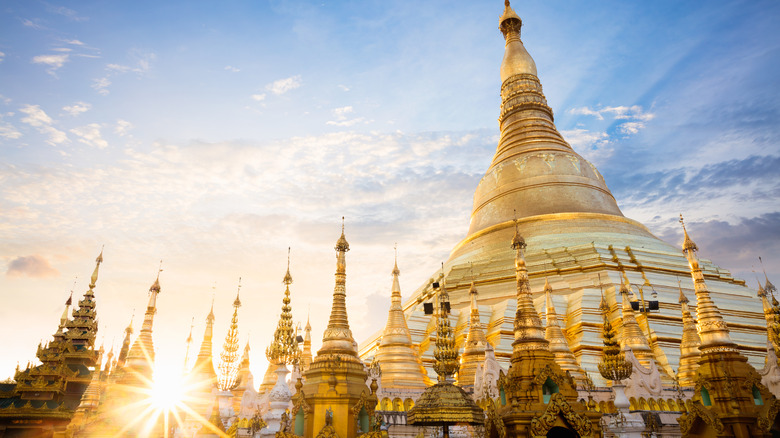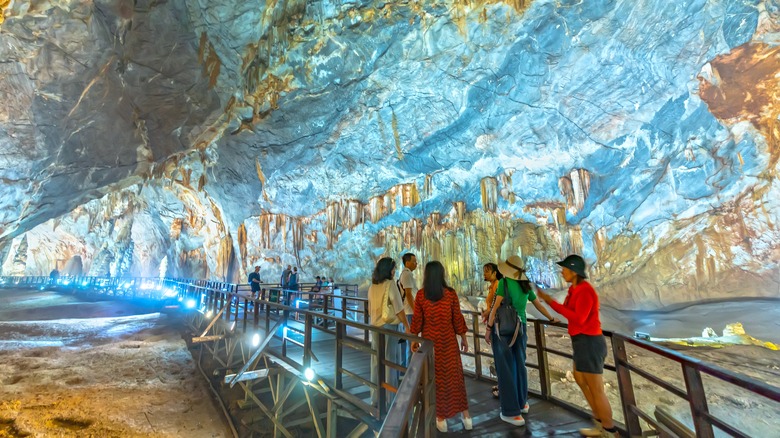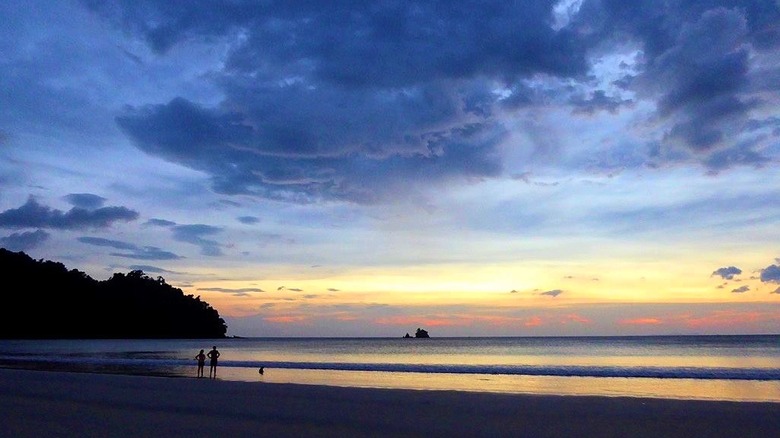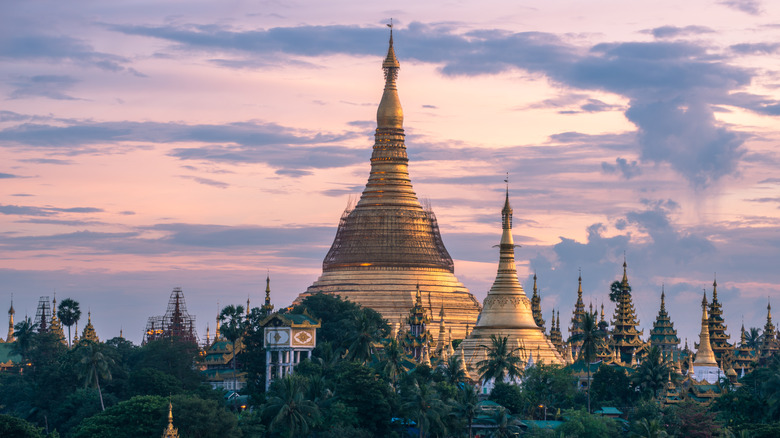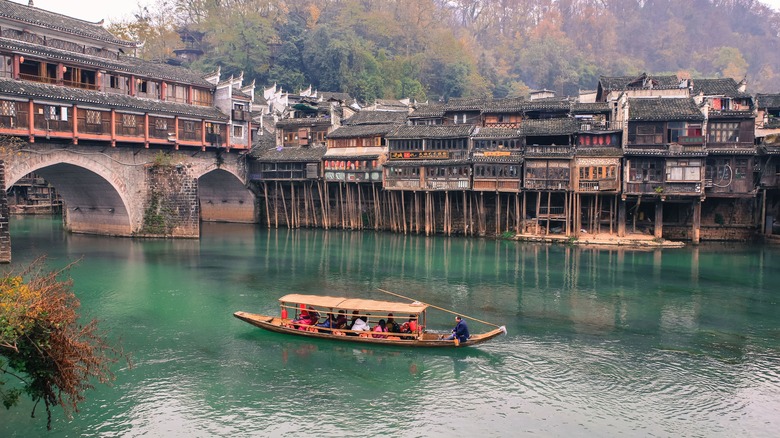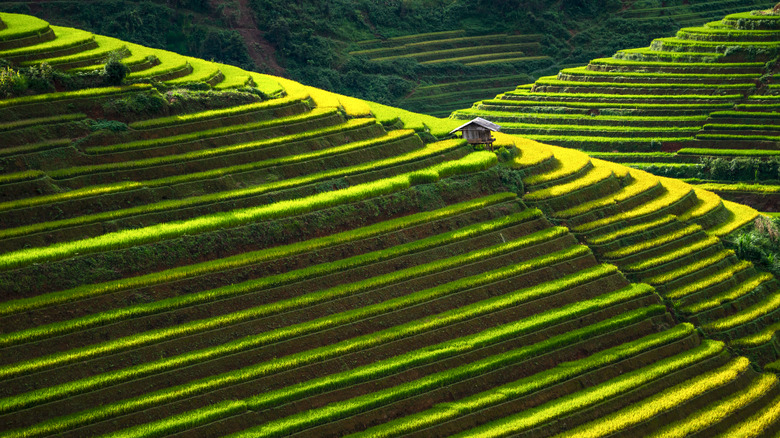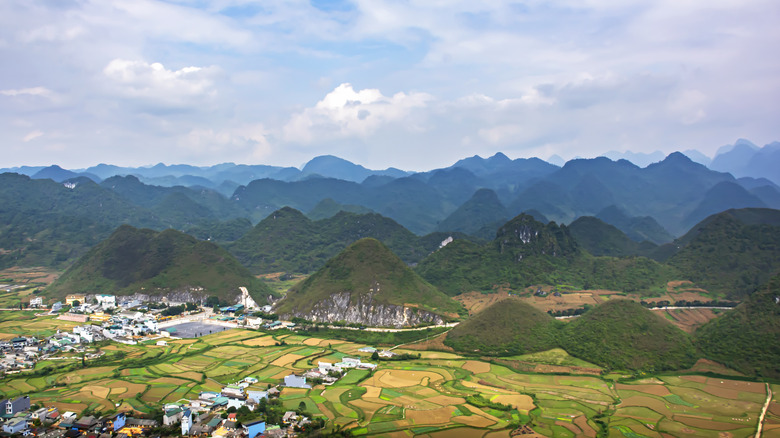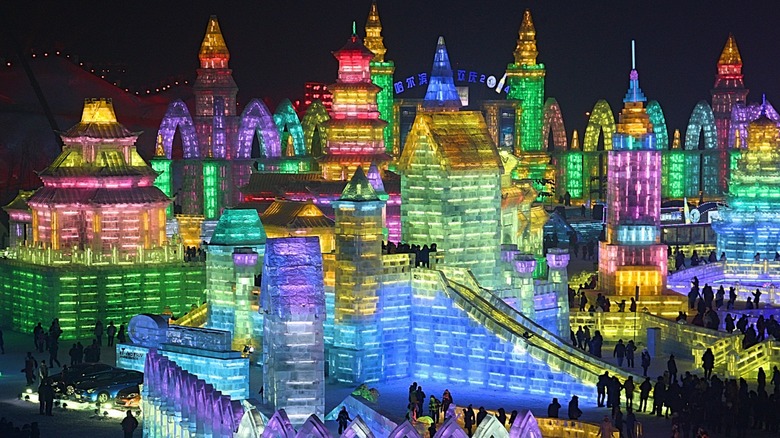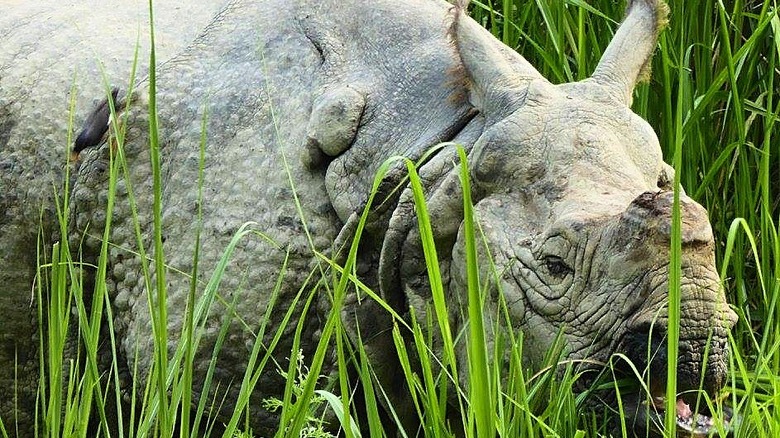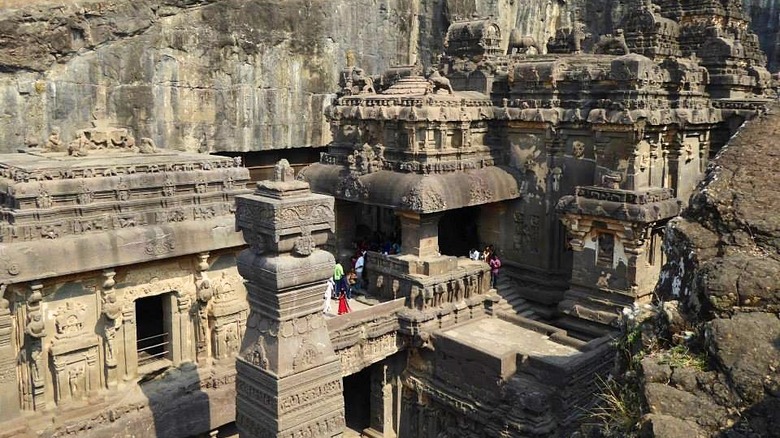The 10 Best Lesser-Known Attractions In Asia, According To Travelers
We all know the most famous tourist attractions around Asia, whether we have been to them or not. Understandably, the Great Wall, the Taj Mahal, Phuket, and Angkor Wat are a few of the continent's most common bucket list checks. Anyone would jump at the chance to visit them. Additionally, younger travelers may aspire to attend the Full Moon Party in Thailand or revel in Goa, India, while adventurers seek to do the Everest Base Camp trek.
But what if you have done all that? Have you already seen the best the continent has to offer? The answer is no because there is an almost endless number of places still to explore. From religious sites to natural wonders and even entire underrated countries like Laos, Asia is such a vast and phenomenal continent to visit. You could easily spend a lifetime traversing it and discovering extraordinary new places at almost every turn. Exploring this continent beyond the primary bucket list checks means that, as wonderful as they may be, those mainstream sites could drop further down your list of favorites. Here are ten of the best alternative Asian destinations awaiting your discovery.
Phong Nha Ke Bang National Park, Vietnam
Vietnam is one of the world's most affordable destinations, and it provides a remarkable cave system that delivers mesmerizing wonder that no other subterranean labyrinth on our planet can. Phong Nha-Ke Bang National Park is a UNESCO World Heritage Site in Quang Binh province. Paradise and Phong Nha caves are the park's two most accessible. However, if money is no object, an adventure into Hang Son Doong is a once-in-a-lifetime experience. It's the largest cave known to man. In fact, it's so big that any of Earth's other size-ranked caves will fit comfortably inside. It remains relatively unexplored by tourists, which is mainly due to the limited number of visitors permitted to enter annually and the eye-watering costs that go with it.
However, for those on a regular budget, the stunning Phong Nha Cave is an easier and more affordable option. You explore this one by long-tail boat, drifting along the turquoise river while admiring the natural limestone formations, which is a leisurely yet unforgettable experience. Inside the enormous caverns, your breath will be taken by the illuminated, icicle-like stalactites and towering stalagmites. Unfortunately, tourists can only explore around one mile (1.5km) of the cave's total length of 28 miles (44.5km) of passages. Luckily, however, this is more than enough to leave you spellbound.
Paradise Cave is a much different yet equally captivating experience. This trek is completed on foot after a steep climb or electric buggy ride to the entrance. Your efforts are rewarded with vast caverns and astounding limestone formations. For the adventurous, a paid guide can take you deeper inside and is well worth the extra cost.
Koh Phayam, Thailand
You shouldn't confuse this little beauty with the Full Moon Party island of Koh Pha Ngan, which is usually pronounced by foreigners as Koe-Pa-Nyan. Koh Phayam — pronounced Koe-Pa-Yam – is a different island and a different vibe altogether. If you have been a regular visitor to the Land of Smiles for the past two or three decades and long for how things used to be, this island is perfect for you.
Koh Phayam is certainly not one of the country's overcrowded tourist destinations. It will make you feel like you have gone back in time with its long, underdeveloped beaches and bamboo huts on the sand. There are no luxury 5-star resorts, and its mixture of travelers, from older hippies to young families, adds to the unique atmosphere on the island. There are no cars, only a small number of scooters and bicycles, and development is at the point where you still feel like you are truly getting away from it all.
Ao Yai (Long Beach) is the island's best and longest stretch of sand and offers the most accommodation options. Yet the bamboo resorts are spaced far enough apart to maintain that secluded, tropical paradise feel. At night, things are still quiet, with each resort along Ao Yai taking a turn throwing a low-key party in order to keep noise levels down. Furthermore, there's still enough development for you to buy souvenirs, get a Thai massage, or even rent a motorbike to explore the island.
Shwedagon Paya, Yangon, Myanmar
Myanmar (otherwise known as Burma) is not the most accessible country in the world. Much of it remains out of bounds to tourists, and the prevailing cry from those who say you shouldn't visit this remarkable place due to political turmoil and human rights issues can be a concern. However, a coin always has two sides, and many locals in Myanmar desperately rely on tourism. Furthermore, the country was once known for its isolation and limited infrastructure. However, amenities such as internet access continue to improve year on year. This is especially true in big cities like the capital, Yangon, making travel there much more appealing to international visitors.
But it's in Yangon where you will find one major attraction that has not changed for a very long time. The magnificent Buddhist pagoda, Shwedagon Paya, is a sparkling wonder that drips in gold, diamonds, and other gems and jewels and is a jaw-dropping sight. It is said to be 2,600 years old, and chronicles from the 1300s assert that it houses sacred items from four Buddhas, including eight hairs of the original Buddha, Gautama. The 114-acre complex also features numerous other temples and shrines, and you can easily spend a whole day there marveling at its architectural splendor and ornate beauty.
Throughout the day, you can witness monks and locals praying and chanting. As night draws in, the golden structure is starkly illuminated against the jet-black sky. The whole place magically lights up like treasures in a dragon's lair, making it, without a doubt, one of Asia's most enchanting pagodas.
Fenghuang, China
Widely regarded as the most beautiful town in all of China, Fenghuang is an absolute delight. Strolling around its markets and admiring the ancient Ming and Qing dynastic architecture is unforgettable. It's an ancient town well over 300 years old and is named after a mythical Chinese bird similar but different to the phoenix from Greek mythology. Fans of Chinese movies set in bygone days will love traveling back in time and witnessing this remarkably preserved relic.
You can stimulate your senses by boating on the TuoJiang River or trying local delicacies like freshly made ginger candy or the smoked meats and fiery dishes of Hunan province, where this town is situated. You can learn about the local Tujia and Miao minorities, which will reveal a China unknown, and visit the surrounding countryside, such as the village of Dehang and its majestic, towering karst peaks. In fact, most of this province is incredible. Indeed, Fenghuang is on the way to Zhangjiajie — another stunning yet lesser-known Asian destination and home to the floating mountains of "Avatar."
There is just one problem with visiting this amazing place. You may well have to reorganize your list of best Chinese tourist sites. While the Great Wall and Terracotta Warriors are amazing, after visiting Fenghuang, you'll likely have to shift them further down your list.
Ifugao Rice Terraces, the Philippines
Most people visit the small city of Banaue on the Philippine island of Luzon to see the ancient Ifugao Rice Terraces. Even the Mad Titan, Thanos, the serial bad guy from "The Avengers," took a vacation here. But, for the most sublime views, you should take the short trek to the small village of Batad nearby. If you have a phobia of rustic accommodation, you can visit during the day and spend the night in Banaue. However, peering up at the mist-enshrouded terraces at first light over a hot coffee will more than atone for the lack of amenities you had to endure the night before. You will likely strain your neck from peering up at the amphitheater-like towering terraces, but you will feel well rewarded for making the trip there. You can arrange treks up into the mountains for even more sublime views, or you can hike by yourself along the mountainside paddy fields around the village.
The terraces at Batad and four other sites in the area fall under the UNESCO-listed Rice Terraces of the Philippine Cordilleras. Oddly, the impressive terraces at Banaue do not — rumored to be because of modern structures built on the site. However, these 2,000-year-old paddy fields carved into the steep mountains have survived because every new generation learns the maintenance and cultivation skills necessary to keep them operational and thriving. They are the oldest rice terraces in the world and stand as a testament to human ingenuity and the enduring relationship between people and their environment. However, this man-made marvel, often referred to as the 8th Wonder of the World, is for patient travelers only. To get there, you need to take a bumpy 10-hour bus ride from Manila.
The Kinabatangan River, Sabah, Malaysia
As the sun bathes the early morning sky with subtle colors at first light over the Kinabatangan River, boatmen gently dip the water with their oars, and passengers keep their muffled voices low in anticipation. It's at this early hour that you'll catch your first glimpses of the many animals that call this place home. The river is an extraordinary haven on the island of Borneo in the Malaysian province of Sabah and is a sanctuary for a condensed wildlife population. You'll get the chance to see everything from pygmy elephants to shy orangutans while colorful, squawking hornbills, saltwater crocodiles, and proboscis monkeys with their huge cartoonish noses also await.
However, it's essential to understand why there is such a high concentration of wildlife here before you visit. The continuous clearing of the lush, green Bornean rainforest for oil palm plantations has created these narrow wildlife corridors along the river. The animals are confined to smaller areas, which makes them easier to see. Yet, tourist dollars offer authorities a reason to preserve this special area and have led to increased conservation efforts. The area's official declaration as a wildlife sanctuary in 2006 was an excellent start.
But, like other essential ecological areas around the world, a balance between economic gain and habitat conservation needs to be found. Money talks, and with authorities unlikely to give up such a lucrative export like palm oil, finding this balance is critical to sustainable development. So, as long as visitors continue to bring revenue to the ecotourism industry here, these small refuges remain protected, at least for now.
Ha Giang, Vietnam
Close to the Chinese border in Northern Vietnam, the area around Ha Giang has long been touted as one of Asia's most beautiful and well-kept secrets. It's also one of Vietnam's poorest regions due to the mountainous terrain that makes the area unsuitable for farming. Locals have been encouraged to try growing crops more suitable to the environment. However, it hasn't been easy. Ha Giang's difficulty to get to has also kept tourists at bay – until now. New developments in infrastructure have made the area more accessible, and a visit here will contribute to boosting the local economy while giving you some unforgettable memories.
The region's highlight is undoubtedly its mountainous scenery. Serpentine roads coil around chocolate-drop peaks, and waterfalls tumble and spray as your vehicle clings to the narrow roads that wind their way down the verdant mountainsides. Getting on a motorbike and exploring these roads and high passes around Ha Giang is an incredible journey. If you're uncomfortable riding, you can hire a guide on two wheels for the adventure, such as those from the reputable and nationwide Easy Riders.
Experienced independent riders and pillion passengers alike will have a blast riding the Ha Giang Loop. This route starts in the city and works its way northward to the border, then loops back to Ha Giang again. However, ensure you are fully licensed and insured, as accidents can happen. You can also trek in the area and visit ethnic minority villages to fully experience this fascinating area at a slower pace.
Harbin, China
If you can stand the cold, and by cold, we mean well below freezing as opposed to a little bit nippy, a visit to the International Ice and Snow Festival in Harbin, China, is a unique choice for adventurous types. Temperatures can plummet to -13 °F (-25 °C) in the coldest months, so wrapping up tight is essential. For those who can brave it, the spectacle on display is a winter wonderland from a childhood fantasy. Vast sculptures of Buddhas, ice palaces, and world landmarks, among other fantastical creations, look astonishing during the day. You can walk around inside the frozen buildings, and you even have the opportunity to slide out of many of them. You'll also get the chance to partake in various other winter activities like ice skating, snowmobiling, and dog sledding.
At night, colorful lights turn these enormous frozen monuments into a Disney-like dream. Children will particularly love what's on offer here. However, adults will also feel mesmerized by the sheer talent that has gone into sculpting these fantastical ice worlds. There are two main exhibition areas to visit, and some city parks and gardens also have enchanting displays on offer. The city itself blends Chinese and Russian influences, which means the food is hearty on top of delicious. In fact, the town was founded by Russian settlers, and their impact on the architecture and culture remains.
Chitwan National Park, Nepal
Nepal isn't just about high-altitude trekking, base camps, and towering peaks. In the lowlands, you can experience lush tropical forests and hot, humid climates. Chitwan National Park falls into this category, and it's a place where you can get up close and personal with wildlife. And, when we say close, you might even get a little too close.
You can see all sorts of animals here, even around the town of Sauraha, the nearest settlement to the park. In fact, an abundance of animal sightings is pretty much guaranteed, at least for the more common animals. You can find snakes, such as cobras or pythons, and bigger mammals, such as wild rhinos (who have had their horns removed to reduce their value to poachers) and semi-wild elephants. Reptiles, like gharials and alligators, are also common sights. With a good guide, you may even get the opportunity to spot the elusive Bengal tiger or a leopard.
However, there is a cautionary tale. Some tour operators offer walks that encroach into animal territories. Take these tours at your own risk, as there have been reports of injuries and even the occasional death at the jaws of hungry tigers. It is safer (and much more relaxing) to take a jeep tour to see these majestic animals. When procuring services from a reputable company, expert guides will ensure your safety and timeless memories. Scrutinize online reviews and ensure the services on offer are safe for both you and the animals before parting with your hard-earned cash.
Aurangabad, India
The city of Aurangabad, in western India, is a hot and steamy mess. Once there, your thoughts will likely be focused on getting out and into the surrounding rural areas. This is because you are likely there to take in the fantastic rock-hewn caves and temples at the various sites scattered around the city's vicinity.
The first to explore is the photogenic site of the Buddhist Aurangabad Caves on the outskirts of the city. There are 12 rock-cut Buddhist shrines here that date back more than 2,000 years. And while this site isn't as well-known or as spectacular, it does serve as a nice warm-up to the main events of Ellora and Ajanta. The offerings at Ellora Caves feature Hindu, Buddhist, and Jain monuments, with incredible artwork dating back 1,400 years. The largest rock-cut monument here is the Kailasa Temple, dedicated to the Hindu god Shiva. This colossal and intricately carved behemoth was hewn from a single rock with nothing more than hammers and chisels.
While the Ellora caves could easily be considered a wonder of the world, the sublime Ajanta caves, where you can see some of the best surviving examples of ancient Indian art, are equally impressive. Like the Ellora Caves, they are a UNESCO World Heritage Site, and there are 30 of them to explore, with the oldest one dating back to the first century BCE. Anyone who makes the journey to see even just one of these unique cave collections will be rewarded with staggering sights that will live long in the memory.
